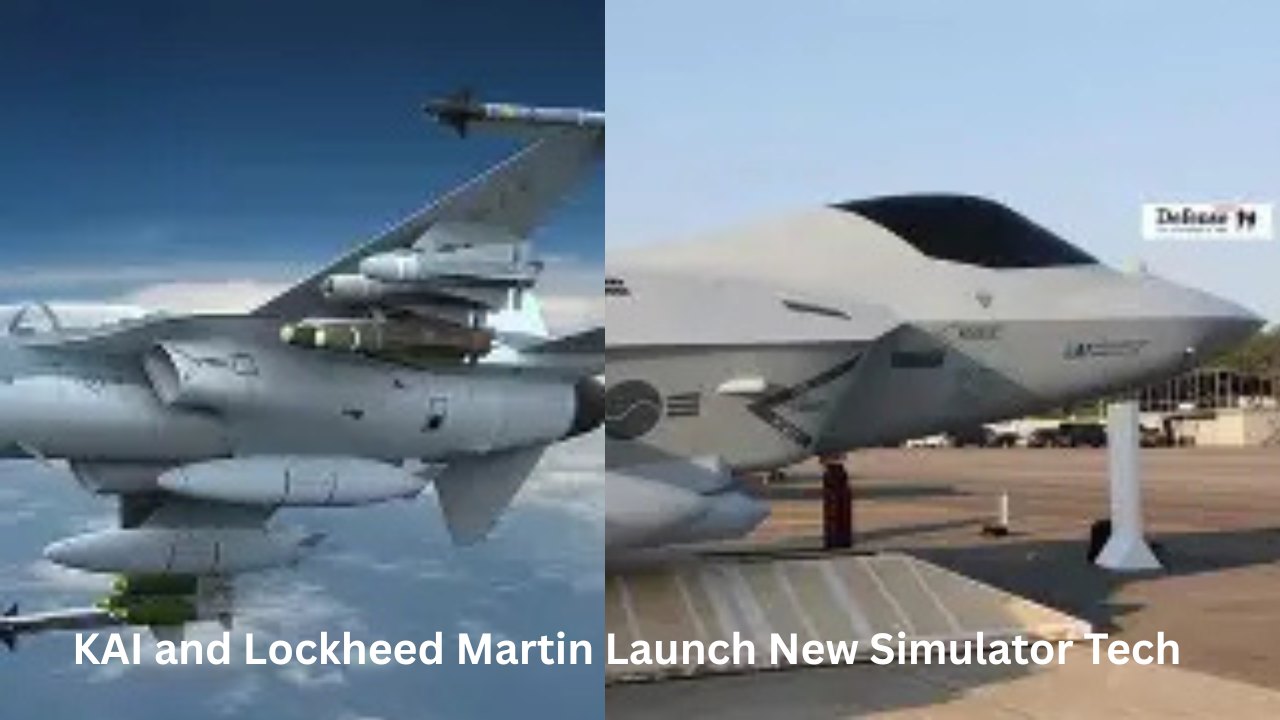Seoul, November 10, 2025— Korea Aerospace Industries (KAI) has formally teamed up with U.S. defense contractor Lockheed Martin to improve the Republic of Korea Air Force’s KF-16 flight simulators so that they can work like the more advanced F-16 Viper.
The agreement, which was signed on November 7, starts a six-year endeavor to make nine KF-16 simulators that the South Korean Air Force already uses work better and seem more realistic. The two aerospace titans inked a strategic memorandum of understanding (MOU) earlier this year, which is what this partnership is based on. Changing the KF-16 Simulators to the F-16V Setup
KAI will upgrade important parts of the simulator, add the newest systems, and offer technical assistance on-site as part of the new contract. The new simulators will be like the advanced F-16V, which is the newest version of Lockheed Martin’s F-16 fighter. It has the best avionics, mission computers, and AESA radar systems.
The updates will enable pilots practice in situations that are very similar to real-life combat situations, which will make them more ready to fly and more effective in battle.
KAI said that its goal is to make a “perfect, high-fidelity training environment” that improves pilots’ skills, safety on the job, and the reliability of the equipment. The organization will also offer support services following delivery to make sure that everything runs smoothly in the long run.
A planned growth of the KAI–Lockheed Martin partnership
This new initiative is another step in the long history between KAI and Lockheed Martin, which goes back to the 1990s when South Korea was allowed to make F-16s.Later, the cooperation grew as they worked together to make the T-50 Golden Eagle supersonic trainer, which is known around the world.
The two firms worked together more in June 2025 with an MOU that focused on working together on modeling and simulation (M&S) and next-generation defense technology. A KAI official said, “We will help modernize the Republic of Korea Air Force’s training system and make flying safer through strategic cooperation with Lockheed Martin. “As a maker of aircraft platforms, we want to keep giving technical support to make sure that projects go well.
Improving Korea's ability to train pilots
The KF-16 fighter plane has been South Korea’s main air defense system for a long time, and its simulator systems are very important for getting pilots ready for real operations. The new enhancements will make the simulators as good as the F-16V, which will let them support the most advanced radar, targeting, and electronic warfare training situations.
This project is built on KAI’s experience making simulators. The business has made and delivered more than 70 simulators on its own so far. These include simulators for the T-50, KT-1, Surion helicopter, and Light Armed Helicopter (LAH).
KAI can combine realistic flying physics, high-quality visuals, and interactive mission scenarios into one program because they have so much experience in these areas. These are all important parts of current pilot training. KAI’s Bigger Simulation Vision: Going Beyond Aviation
In addition to the KF-16 program, KAI continues to expand its footprint in the defense simulation and training sector. The company has expanded its technical portfolio to include naval and maritime operations by creating simulators for:
One type of maritime patrol aircraft is the P-3C.
Training aids for the Navy’s Jangbogo-III submarine helm and
The high-speed landing craft simulators (LSF-II).
KAI is also working on training systems for Virtual Reality (VR) and Mixed Reality (MR). These systems use technologies from the Fourth Industrial Revolution, such as the metaverse, big data analytics, and AI. South Korea’s main goal is to make its defense system more computerized, and these programs fit within that.
Making South Korea's aerospace industry more competitive
The KF-16 simulator improvement contract demonstrates that KAI is becoming a pioneer in aerospace innovation and can collaborate effectively with defense partners around the world. It also demonstrates South Korea’s commitment to improve its training facilities in preparation for increasingly complex air operations.
The project will take six years, which means that the Air Force will gradually get the better simulators, keeping pilots ready during the changeover.
A Step Toward the Next Generation of Defense Training
The initiative to enhance the KF-16 model represents a significant investment in the sustained advancement of South Korea’s national defense. This alliance demonstrates the importance of governments working together to develop defense and space assets. By sharing information, technology, and new ideas, the two parties are collaborating to create security systems that are more adaptable to the changing needs of modern warfare.
In addition to advancing the KF-16 program, KAI is also designing simulation systems for various other military platforms. This collaboration underlines the importance of international cooperation in developing space and defense capabilities. By exchanging ideas, technology, and information, these two groups want to develop security systems that can better adapt to the changing nature of modern warfare.








